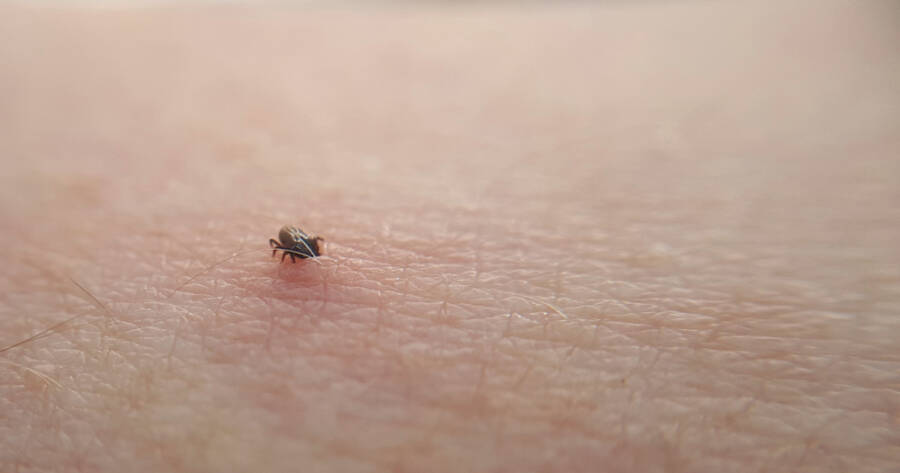Tick-borne illnesses are a growing concern worldwide, affecting both humans and animals. These diseases are caused by pathogens that ticks carry and transmit through bites. With climate change likely contributing to the increase of ticks, it’s more important than ever to understand these illnesses. Fortunately, you can explore the prevention, symptoms, and treatment of tick-borne illnesses, helping you stay safe outdoors.
What Are Tick-Borne Illnesses?
Tick-borne illnesses are infections spread by tick bites. Ticks are small parasites that attach themselves to animals and people. They feed on blood and can carry bacteria, viruses, and parasites. When a tick bites, it may pass these pathogens into the bloodstream. The most well-known tick-borne illness is Lyme disease, but there are many others, such as Rocky Mountain spotted fever and anaplasmosis.
Not all ticks carry diseases, but it is difficult to tell which ones do. That’s why taking preventive measures is important if you spend time outdoors. Understanding how these illnesses spread can help you avoid the risks.
Prevention: How to Protect Yourself from Tick Bites
Preventing tick bites is the best way to avoid tick-borne illnesses — and to prevent them, it’s essential to wear protective clothing when you’re in tick-prone areas. Planning to hike or spend time in wooded or grassy areas? Make sure you wear long sleeves, long pants, and socks. Tucking your pants into your socks adds extra protection. Here’s a pro tip: light-colored clothing helps you spot ticks more easily.
Another helpful weapon is insect repellent. By applying a solution that contains DEET or picaridin to exposed skin, these repellents can keep ticks away. Once you’re back indoors, the next step is to carefully check your body for ticks. Be sure to check around your waist and groin area, as well as behind the ears and under the arms, as these are common areas tiny ticks love to hide.
If you want to take extra precautions, a warm shower after being outdoors can help remove ticks. In addition, washing and drying your clothes on high heat can destroy any remaining ticks that are hiding in your clothes.
Recognizing Symptoms of Tick-Borne Illnesses
If a tick bite does occur, it’s important to recognize the symptoms of tick-borne illnesses early. Symptoms can vary depending on the disease, but here are some common signs to watch for: 1
- Fever: A sudden onset of fever is a common symptom of many tick-borne illnesses. The fever may be mild or high and can last for several days.
- Rash: Many tick-borne diseases, like Lyme disease and Rocky Mountain spotted fever, cause a rash. The rash may start at the site of the bite and spread to other parts of the body. In Lyme disease, the rash often looks like a bull’s-eye.
- Headache: A persistent headache, often severe, can be a sign of a tick-borne illness. The headache may not go away with typical pain relief methods.
- Fatigue and muscle aches: Feeling extremely tired and experiencing muscle or joint pain are also common symptoms. This fatigue can be debilitating and last for weeks.
- Nausea and vomiting: In some cases, nausea and vomiting accompany other symptoms. These symptoms can worsen without treatment, making it hard to eat or stay hydrated.
If you notice any of these symptoms after a tick bite, seek medical attention immediately. Early detection is key to preventing more serious complications.
How Tick-Borne Illnesses Are Diagnosed
Diagnosing tick-borne illnesses can be tricky because many symptoms are similar to other conditions. However, doctors usually start by asking about your recent activities, such as spending time outdoors or in areas where ticks are common.
If a tick bite is suspected, your doctor may order specific tests to identify the illness. Blood tests are commonly used to detect the presence of bacteria, viruses, or pathogens carried by ticks. Occasionally, imaging tests, such as X-rays or MRIs, can be helpful in severe cases to reveal whether a tick-borne illness is leading to complications.
Finally, a physical examination is often performed to check for rashes, swollen lymph nodes, or other signs of infection. These approaches can confirm the diagnosis and prove instrumental in leading to the best treatment options. Remember, an early diagnosis greatly improves the chances of a full recovery, so reach out to your doctor if you suspect a tick bite.
Treatment Options for Tick-Borne Illnesses
Treatment for tick-borne illnesses usually involves antibiotics, especially for bacterial infections like Lyme disease. The type of treatment depends on the specific illness and how early it is diagnosed. Here are common treatment approaches:
- Antibiotics: Most bacterial tick-borne illnesses, including Lyme disease and anaplasmosis, are treated with antibiotics. 2 Early treatment is often effective and can prevent long-term complications. Doxycycline is commonly prescribed.
- Supportive care: In addition to antibiotics, doctors may recommend supportive care. This can include rest, fluids, and pain relief to help manage symptoms like fever, headaches, and muscle pain.
- Hospitalization: Severe cases of tick-borne illnesses, such as Rocky Mountain spotted fever, may require hospitalization. In these cases, intravenous (IV) antibiotics and fluids are often necessary.
- Long-term management: Some people experience long-term symptoms after a tick-borne illness, a condition often called post-treatment Lyme disease syndrome. This may require ongoing care and rehabilitation to manage fatigue, pain, and other symptoms.
Stay Vigilant About Ticks
Tick-borne illnesses can be serious, but understanding how to prevent, recognize, and treat them can keep you and your loved ones safe. By following simple preventive measures and seeking medical attention if symptoms develop, you can reduce the risk of complications.
Whether you’re hiking in the woods or spending time in your backyard, staying informed about tick-borne illnesses is the key to enjoying the outdoors with confidence!
